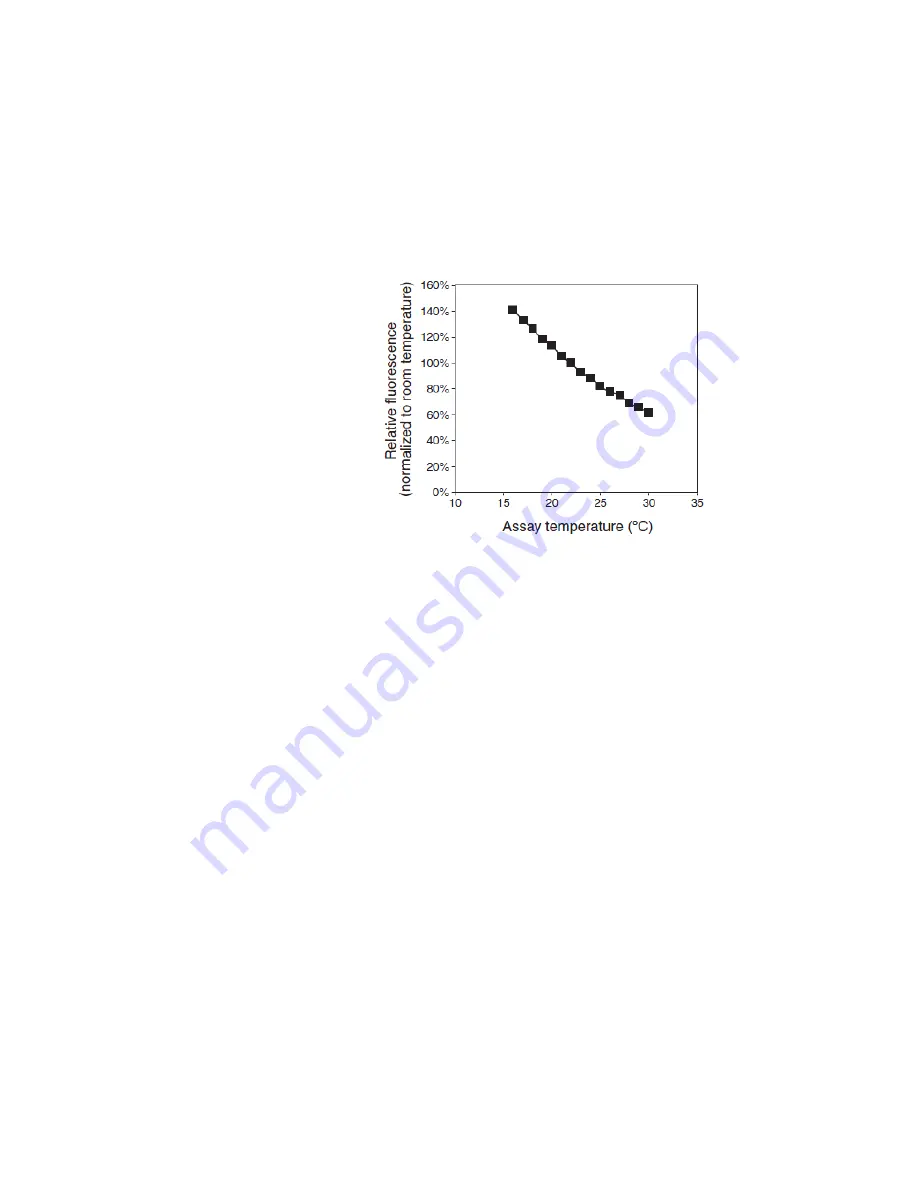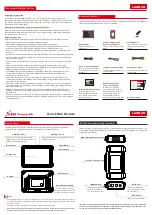
100
Qubit
™
Flex Fluorometer User Guide
Assay temperature
The Qubit
™
assays were designed to be performed at room temperature (22–28°C),
and temperature fluctuations can influence the accuracy of the assay.
To minimize temperature fluctuations, store all kit reagents at room temperature
and insert all assay tubes into the Qubit
™
Flex Fluorometer only for as much time
as it takes for the instrument to measure the fluorescence, because the Qubit
™
Flex
Fluorometer can raise the temperature of the assay solution significantly, even
over a period of a few minutes. Do not hold the assay tubes in your hand before a
measurement, because holding the tubes warms the solution and results in a low
reading.
Figure 2. Effect of temperature on the Qubit
™
dsDNA BR assay. Qubit
™
dsDNA HS,
Qubit
™
ssDNA, Qubit
™
RNA HS, and Qubit
™
protein assays show similar sensitivities over
the same range.
Qubit
™
Flex
Fluorometer
calibration
For each assay, you have the choice to run standards for a new calibration or to
use the values from the previous calibration.
As you first use the instrument, perform a new calibration each time. As you
become familiar with the assays, the instrument, your pipetting accuracy, and
significant temperature fluctuations within your laboratory, you can determine
the level of comfort you have using the calibration data stored from the last time
the instrument was calibrated.
Remember also that the fluorescence signal in the tubes containing the standards
and the samples is stable for not longer than 3 hours. See Figure 1 in “How the
Flex Fluorometer calculates concentration” (page 99) for an example of the
calibration curve used to generate the quantification results.













































